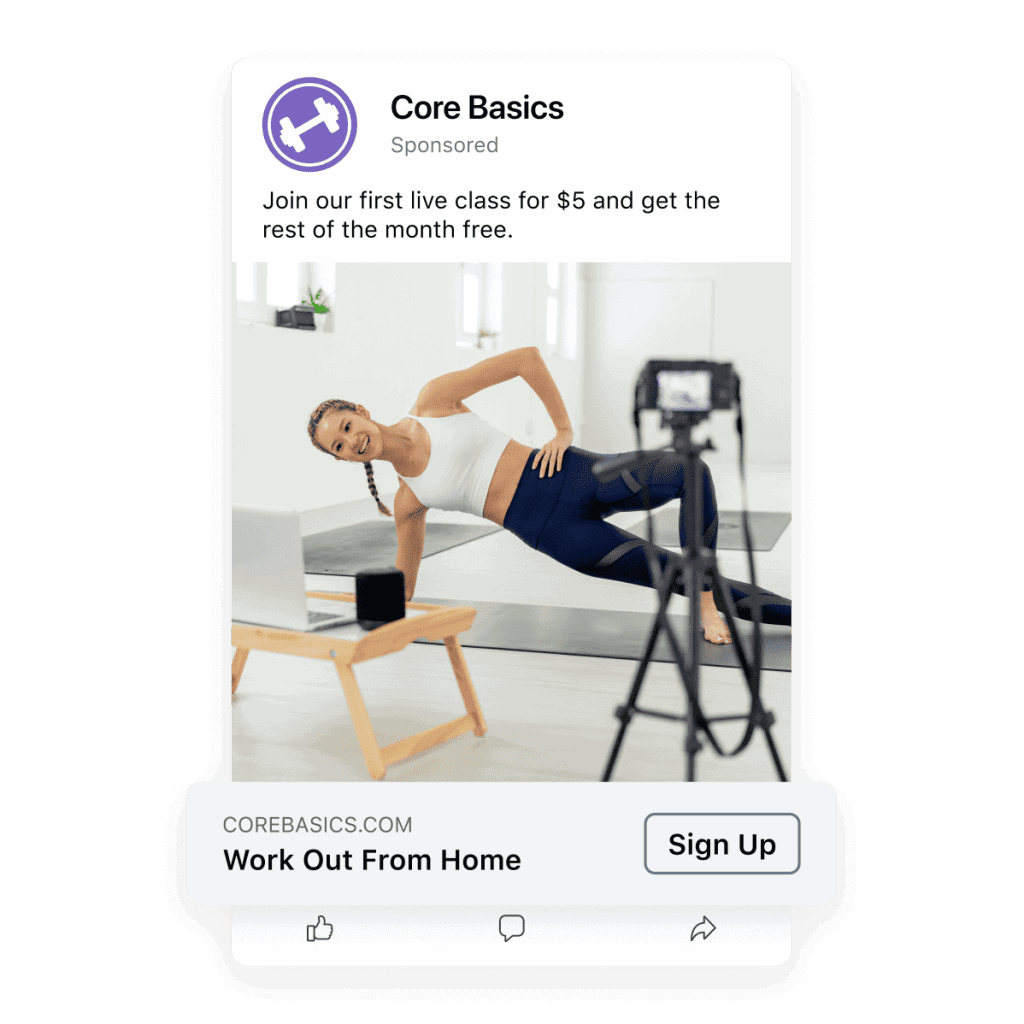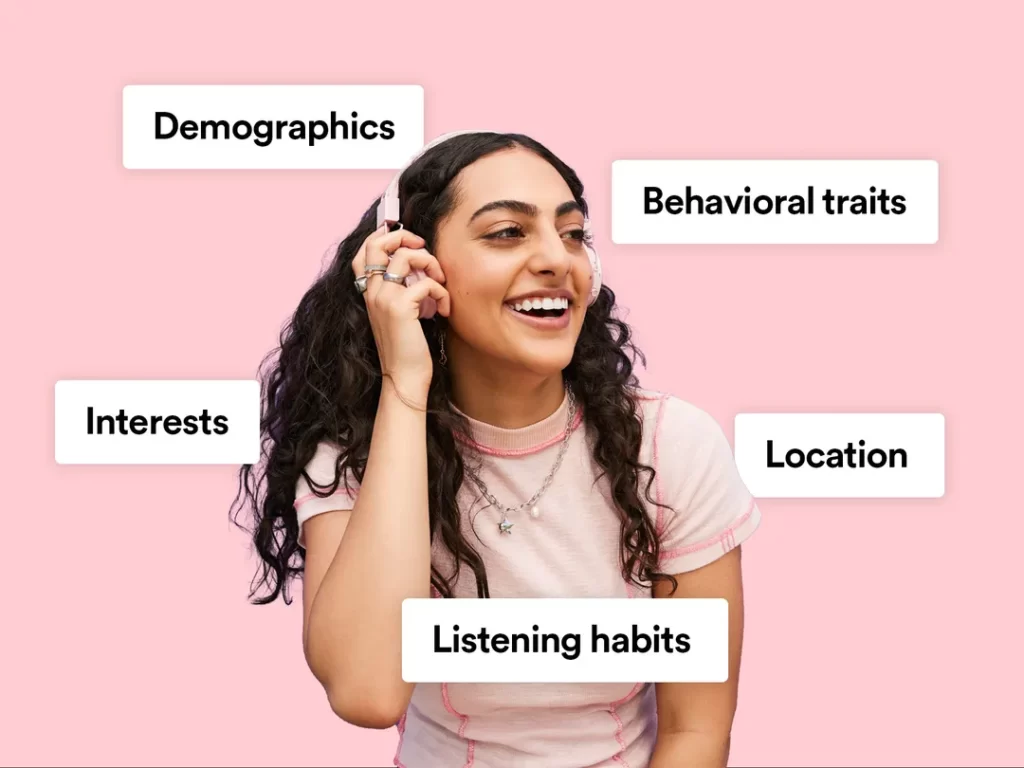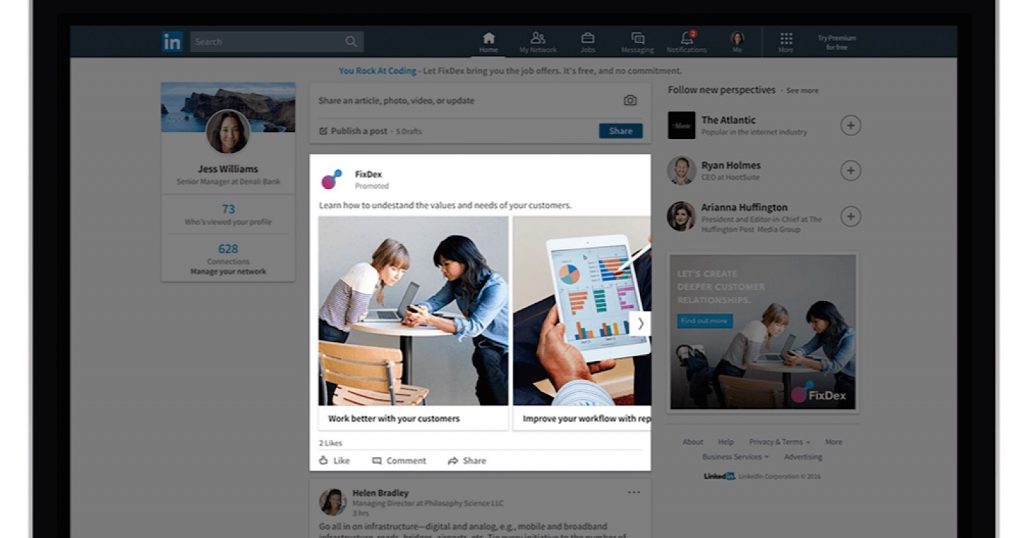Social Media Advertising: In-Depth Guide and Proven Tips
Social media advertising has exploded in popularity over the last decade. Platforms like Facebook, Instagram, X (Twitter), LinkedIn, and TikTok give businesses direct access to billions of users worldwide. These platforms provide marketers with unparalleled opportunities to reach, engage, and convert target audiences.
In 2024, social media advertising is a must for brands looking to grow and thrive online. It can help you rapidly increase brand awareness, traffic, leads, and sales.
But social media advertising can also be complex and overwhelming, especially for beginners. With so many options and strategies to choose from, where do you even start?
This complete guide aims to walk you through everything you need to know about getting started with social media advertising and taking your campaigns to the next level.
Table of Contents
Why Social Media Advertising Matters

Here are some key reasons why social media advertising should be a core part of your digital marketing strategy:
Massive Audience Reach
Over 4.8 billion people now use social media worldwide. Facebook alone has close to 3 billion monthly active users. No other advertising platforms give you access to audiences at this scale.
Targeting Capabilities
Social media platforms offer detailed targeting options to help you reach your ideal customers. Target by location, demographics, interests, behaviours and more to ensure your ads resonate.
Social Context
Ads shown in users' social feeds blend with organic content their friends share. This social context makes ads feel less disruptive and more informative.
Cost-Effective
Social media ads can cost much less than Google or print/TV ads. The minimums to start are low, and you only pay when people engage.
Measurable Results
Robust analytics and reporting provide insights into your ad performance and ROI. See what's working and optimise accordingly.
Retargeting Abilities
Remarket to people who have visited your website or engaged with your brand across the web and in apps.
Flexible Spending
Most platforms have both self-serve and managed options. You control how much or how little to spend based on your goals and budget constraints.
Multi-Channel Approach
Leverage a combination of social platforms and ad formats to maximise reach and diversify spend. Don't rely on just one channel.
Brand Building
Not every social ad needs to drive sales directly. Build brand awareness and affinity through engagement and community building.
In summary, social media advertising provides a versatile, measurable way to reach audiences, spark meaningful engagement, and drive business results when implemented strategically. These networks' targeting, flexibility, and cross-channel nature make social ads invaluable.
Key Social Media Advertising Platforms

Four major social media platforms currently dominate advertising budgets and attention:
Facebook Ads
As the largest social network, Facebook offers unparalleled audience reach, detailed targeting, and sophisticated ad formats. It should be a centrepiece of most social campaigns.
Instagram Ads
Instagram's visually-focused platform is ideal for lifestyle brands, ecommerce companies, and driving engagement. Its ad capabilities are rapidly evolving.
Twitter Ads
Twitter provides a unique way to connect with audiences in real time around current news, events, and trends. Great for quick responses and topical engagement.
LinkedIn Ads
The premier social media platform for B2B marketers. LinkedIn's professional audience and targeting makes it ideal for generating leads.
Other platforms like Snapchat, TikTok, Pinterest, YouTube, Reddit, and Quora offer compelling advertising solutions suitable for specific brands and objectives. We'll dive deeper into each platform later in this guide.
Critical Social Media Advertising Formats
Social platforms offer a variety of ad formats to suit different goals and creative approaches:
Image Ads
Static image ads (with optional text overlay) are the most straightforward and affordable social ad format. Images can help boost engagement quickly.
Video Ads
From short video clips to live broadcasts, video ads capture attention and tell stories. Video generates higher engagement than images alone.
Carousel Ads
Showcase multiple images/videos in one ad unit, with each piece of media individually clickable. It keeps the viewer engaged.
Stories Ads
Vertical, full-screen ads in Instagram/Snapchat Stories disappear after 24 hours. They offer a sense of urgency.
Augmented Reality (AR)
AR ads include interactive experiences, like product trials. These help brands stand out while providing entertainment.
How to Define Your Social Media Advertising Goals and Objectives

Establishing your goals and objectives is the first step in any social media advertising campaign. A clear vision of what you want to accomplish will inform the rest of your planning and execution.
Goal Setting Best Practices
- Get specific. Avoid vague goals like “increase engagement” and get quantifiable. How much do you want to increase engagement, and on which networks?
- Know your KPIs. Establish 1-3 key performance indicators like sales, conversions, or follower growth to tracking.
- Set timeline benchmarks. Results take time, so set goals for 30, 60, and 90 days. This helps track momentum.
- Research your baselines. Review historical data and current performance to establish realistic goal targets.
- Prioritise. Focus on the 1-2 most important business goals per campaign. Balance short and long-term objectives.
- Consider assets. Audit your existing content and creative assets – produce more as needed to support goals.
- Align with overall strategy. Let your broader branding and marketing objectives guide social advertising goals.
SMART Model for Goal Setting
Apply the SMART framework when crafting your social advertising goals:
Specific: Be detailed in what you want to achieve. Example: “Increase Instagram followers from 30k to 40k in 6 months.”
Measurable: Quantify the goal and establish success metrics to track progress.
Attainable: Set challenging but realistic goals based on historical data, market dynamics, budget, etc.
Relevant: Goals should map directly to business priorities and help fill gaps in existing efforts.
Time-Bound: Include a specific timeline or deadline to work towards.
Common Social Media Advertising Goals
Here are some of the most common goal types to focus your social ad campaigns:
- Increase brand awareness and reach
- Generate qualified leads or conversions
- Engage with audiences and build communities
- Promote specific products, content, or events
- Retarget website visitors
- Acquire new customers
- Drive website traffic
- Grow social media followers and engagement
Of course, goals should vary based on your unique business objectives and target audience needs. The key is identifying the 1-2 goals with the most significant potential impact and ROI.
How to Research Your Target Audience for Social Media Ads

Another crucial element of social media advertising success is understanding your target audience inside and out. The more you can tailor your messaging, visuals, and strategy to resonate with your ideal customer, the better results you will achieve.
Here are some best practices for researching your audience:
Gather Basic Demographic Info
Start with the basics: age, gender, location, income level, education, occupation, marital/family status, etc. Free tools like Google Analytics and social media audience insights can help.
Explore Psychographics
Look beyond demographics to understand attitudes, interests, values, motivations, and lifestyles. Social listening and surveys are great for gathering psychographic data.
Define Your Buyer Personas
Identify 2-3 fictional representations of your ideal customers based on research. Give them names, photos, backgrounds, and detailed traits.
Analyse Current Followers and Engagement
Review existing social media follower demographics and look for patterns in the content they engage with most.
Competitor Research
See what audiences your competitors attract and their messaging approaches. You can learn a lot from their customer targeting.
Talk to Real Customers
No research beats getting first-hand insights from actual customers through interviews, polls, focus groups, reviews, etc.
Monitor Trends
Keep up with the latest trends related to your industry, product interests, and customer needs. Trends impact motivation and behaviours.
With rigorous audience research, you can create detailed buyer personas and tailor your ads and messaging to their preferences. Take the time upfront to get audience insights right.
How to Set Your Budget and Bid Strategies

One of the most significant advantages of social media advertising is the ability to customise your spending levels and bidding strategies based on your budget and campaign priorities:
Set Your Overall Budget
Decide how much you can invest in monthly or campaign social media advertising. Some common approaches:
- % of revenue – Example: 5-15% of projected monthly revenue
- Cost per acquisition – Determine your target CPA first, then set a budget based on projected volume.
- Competitive parity – Match competitors' estimated spend in your niche.
- Incremental budgeting – Gradually increase monthly spending to find the optimal amount.
Pick Campaign Objective Bidding
Most social platforms now use campaign objective bidding, where you choose a goal, and their AI optimises bids automatically to get the most events (clicks, impressions, etc) for your budget.
Optimise for Conversions or Exposure
Do you prioritise conversions/transactions or broad exposure? Set bids to maximise for one vs. the other.
Geographic and Time Targeting
Adjust bids up or down based on locations, days, or times that perform best or where you want more exposure.
Device Targeting
You may set higher bids for mobile vs desktop if engagement is higher there or vice versa.
Manual Bidding
You can set custom bids per ad or action for more advanced users. This takes closer management but provides more control.
Measure and Adjust
Continuously evaluate performance data and tweak your budgets/bids to drive better results. Never “set and forget” your social ad spending.
Creating Effective Social Media Ad Creative

Your ad creative will make or break campaign performance. Well-designed visuals, copy, and messaging can significantly boost results. Follow these best practices when developing social ad creative:
Know Your Platform Format Specs
Review each platform's image dimensions, video length limits, text length, interactive elements allowed, etc., before designing. Adhere closely to specs.
Lead With Stunning Visuals
Arresting images and videos that catch the eye quickly and convey emotions work. Ensure visuals align with your brand style.
Keep Text Concise
Get to the point fast. You have limited text space, often as little as 125 characters. Lean on images to tell the story.
Write Like a Human
Use conversational language and avoid overly salesy or formal copy. Write like you speak to build genuine connections.
Focus on Benefits Over Features
Explain how your product or service improves lives rather than just listing what it does. Benefits drive action.
Adapt Messaging to the Platform
Tailor copy, hashtags, captions, and calls to action for the context of each network and its norms.
Personalise if Possible
When applicable, leverage custom audiences and PII data for more targeted, relevant messaging.
Test Different Creative
A/B test images, copy, layouts, colour schemes, and more to see what resonates best with your audience.
Retarget With Different Creatives
Show those who have engaged before new messages and offers to nurture them further.
Promote User-Generated Content
Sprinkle in real photos and videos from happy customers to build credibility.
The creative testing process should never stop. Continuously experiment with new ideas while refining what works.
How to Structure Your Ad Campaigns and Ad Sets
Successful social advertising requires strategic campaign structures and segmentation. It would be best to go beyond basic demographics to segment audiences meaningfully.
Campaign Structure Tips
- Group ad sets by objective or product to organise efforts (ex., lead gen campaign, product launch campaign, etc.)
- Use locations, interests, behaviours, and remarketing lists to divide ad sets by shared traits.
- Have tightly-themed campaigns. Don't lump together unrelated objectives or products.
- Launch new campaigns rather than edit existing ones to avoid disrupting data.
- Keep campaign naming conventions consistent and descriptive.
Audience Segmentation Best Practices
- Go beyond basic targeting like age and location to psychographics, behaviours, and intent signals.
- Test interests both broadly and granularly to find the sweet spot for relevance.
- Leverage custom and lookalike audiences from your remarketing and contact lists.
- Exclude existing customers from some campaigns, like lead gen.
- Make heavy social media users or engagers a segment.
- Segment by those likely to take action or convert vs. those building awareness.
- Create VIP segments for the highest-value existing customers to nurture.
A strategic, nuanced approach to audience segmentation will yield significant dividends in performance and ROI. Structure your campaigns wisely.
Tracking and Measuring Your Social Media Advertising Results

A key advantage of social media advertising is the in-depth data available to track and optimise performance. Make sure to monitor and act on these critical metrics closely:
Engagement Rate
The percentage of people who saw your ad and liked, commented, clicked, or engaged. Aim for engagement rates of 3-5% or higher.
Click-Through Rate (CTR)
The ratio of ad clicks to impressions. Look for CTRs above the platform's industry benchmarks.
Cost Per Result
How much do you spend to achieve objectives like clicks, impressions, leads, purchases, etc? Push for lower CPAs.
Return on Ad Spend (ROAS)
The total revenue generated from the campaign is divided by cost. Look for drives with a positive ROAS.
Conversion Rates
The percentage of ad clicks or site traffic converted into defined goals like email signups, purchases, registrations, etc.
Traffic Sources
Evaluate how each social platform and ad format contributes to site traffic to optimise mix and spend.
Lifetime Value
For ecommerce brands, look at how advertising spurs repeat business over time through customer lifetime value (LCLV) analysis.
Diligently monitor performance data and be ready to shift budgets towards better-performing platforms, ad sets, and creativity. Optimisation is a continuous process.
Social Media Advertising Mistakes to Avoid

Through my years of managing social ad campaigns, I've learned how costly some common mistakes can be. Be sure to steer clear of these pitfalls:
Having Unclear Goals and KPIs
Lack of specificity with goals and success metrics makes optimisation and impact measurement impossible. Know precisely what you want to achieve.
Trying to Be on Every Platform
Focus your spending on the 1-3 platforms that reach your audience and move them through the funnel most effectively. Don't spread efforts thin.
Ignoring Audience Insights
Failing to research your customers' needs and preferences will make your messaging miss the mark. Take time to analyse them.
Dark Posts With No Clear Strategy
Promoting every post as a “dark post” ad without a structured plan wastes the budget. Use awareness of dark posts selectively.
Using B2B Tactics for B2C (and Vice Versa)
From creative to calls-to-action, B2B and B2C require very different strategies. Don't try to use a one-size-fits-all approach.
Growing Follows as Your Only Goal
Vanity metrics like follower growth shouldn't be the end game. Focus on driving conversions and sales from quality audiences.
Not Testing Ad Creative
You must continuously test different copy combinations, visuals, layouts, etc., to find what resonates most. Don't launch and leave ads stagnant.
Not Optimising Based on Data
Make campaign optimisation based on performance data an ongoing discipline. Don't leave losing strategies and platforms running.
Your social media advertising can deliver stellar ROI with the right strategic approach and avoidance of these common missteps.
Conclusion and Key Takeaways
In closing, here is a high-level overview of the core components of effective social media advertising:
- Set ultra-specific goals and conversion KPIs to track
- Research your audiences and personas extensively to inform strategy
- Focus spending on 1-3 core platforms with the right users
- Tailor messaging and creativity to engage your target segments emotionally
- Use detailed audience segmentation to serve suitable ads to the right people
- Continuously test new creative elements and ad formats
- Monitor performance data closely and optimise routinely
- Let data guide budget allocations across platforms and campaigns
When executed strategically, social media advertising provides an unrivalled opportunity to drive brand awareness, generate leads, boost sales, and build lasting audience connections. Follow the best practices outlined in this guide while avoiding common pitfalls, and your subsequent social campaigns are sure to succeed.
What social media advertising questions do you still have? The topics below may provide more helpful insight:
Frequently Asked Questions (FAQ) About Social Media Advertising
What is the minimum budget needed for social media advertising?
$100 per month is an excellent minimum budget to test a few ad sets on a platform like Facebook/Instagram. $500 per month allows for more robust testing. Many experts recommend $1000 to launch campaigns properly.
What is the best time to post social media ads?
Posting times can vary by platform and audience, but early morning or evening engagement generally increases. Use each network's analytics to determine your followers' peak times.
How often should you change up social media ad creative?
Ads with the same creative tend to suffer from fatigue after 7-14 days. Refreshing your visuals and copy every 1-2 weeks keeps your posts from becoming stale.
